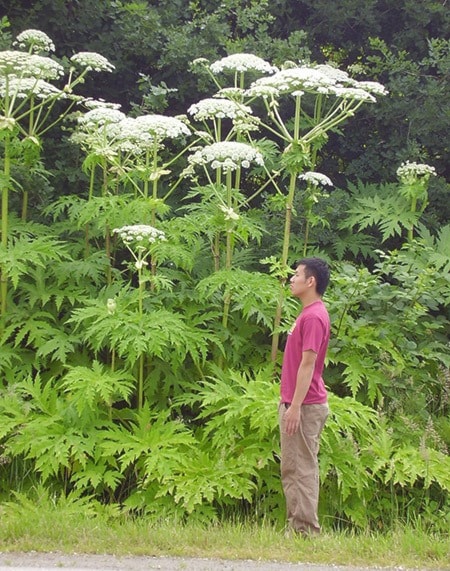Giant hogweed can make skin itch, blister and burn for up to two days after contact with hogweed sap and exposure to sunlight.
This is the time of year when the noxious weed, said to be on the rise in the Lower Mainland, typically goes to seed, carried on the wind and down waterways.
"For the past few years Fraser Valley Regional District has been hard at work controlling the plant from getting firmly established in this region," says Stacey Barker, FVRD's manager of Environmental Services.
They field several calls a day about it, and have found it in two Chilliwack areas this year.
The towering hogweed plant with its white, umbrella-shaped flowers and spiked leaves on hollow stalks can produce up to a whopping 50,000 seeds a year.
"Most of the plants we are seeing though are in the Ryder Lake area and along Chilliwack Lake Road," said Barker.
The plant has been in the media, which has been effective at increasing awareness about the plant and the concerns associated with the skin condition it causes called phytophotodermatitis, due to its corrosive sap.
FVRD crews have eradicated individual plants, or small patches of hogweed, in locations across the region.
Staff painstakingly remove the seed heads with the utmost care, digging up the plants, and advising landowners on safety and removal methods, since landowners are responsible for removing it.
Many of the reports are false alarms. When they check it turns out to be other plants, which can be confused with giant hogweed, including Queen Anne’s Lace, Cow Parsnip, and Devil’s Club.
So hardy, the seeds can remain viable in the soil for up to 10 years, so constant and repeated attention is needed to ensure control, said Barker. Hogweed along watercourses is of particular concern as the seeds can get dispersed downstream.
Anyone who believes they've seen giant hogweed, please report the plant, with an address and specific location, as well as contact information and a photo (if possible) of the plant, particularly the leaves and stem, to weeds@fvrd.bc.ca or call 1-800-528-0061.
More details at www.fvrd.bc.ca or at www.fvipc.ca.
jfeinberg@theprogress.comTwitter.com/chwkjourno
